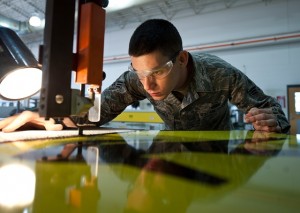 Print a Sign-In Sheet | Spanish Version
Print a Sign-In Sheet | Spanish Version
Most machinery is equipped with safety guards. Guards are designed to protect you from numerous dangers, including moving or sharp machine parts, flying sparks or particles, and hot surfaces.
Guards help protect your arms, hands, and fingers, which are especially vulnerable to injury from a variety of machinery parts, including cutting edges, punching and shearing parts, rotating and in-running shafts, and pointed objects.
Machines should have guards to protect your body from any moving parts. All entry points should be completely covered and the guard itself should not have any sharp surfaces or pinch points. Common guarding methods include:
- Enclosures.
- Interlocking devices.
- Remote control.
- Electronic safety devices.
- Removal devices.
- Moving barriers.
- Two-handed tripping devices.
Machine guard safety rules:
- Never remove or bypass a guard or other safety device.
- Don’t operate a machine if a guard is missing, modified, or not working properly.
- If a guard must be removed for maintenance, ensure that the machine is properly locked and tagged out of service. Before removing the lock and tag, make sure all guards are replaced and will function properly before operations resume.
There is never a good reason to remove or modify a guard on a machine. Even if you think you can work faster without the guard, it is there to protect you and help you do your job more safely. Speak with your supervisor if you are concerned about production goals or think the guard should be changed.
KEMI does not assume liability for the content of information contained herein. Safety and health remain your responsibility. This information is to be used for informational purposes only and not intended to be exhaustive or a substitute for proper training, supervision, or manufacturers’ instructions/recommendations. KEMI, by publication of this information, does not assume liability for damage or injury arising from reliance upon it. Compliance with this information is not a guarantee or warranty that you will be in conformity with any laws or regulations nor does it ensure the absolute safety of any person, place, or object, including, but not limited to, you, your occupation, employees, customers, or place of business.

